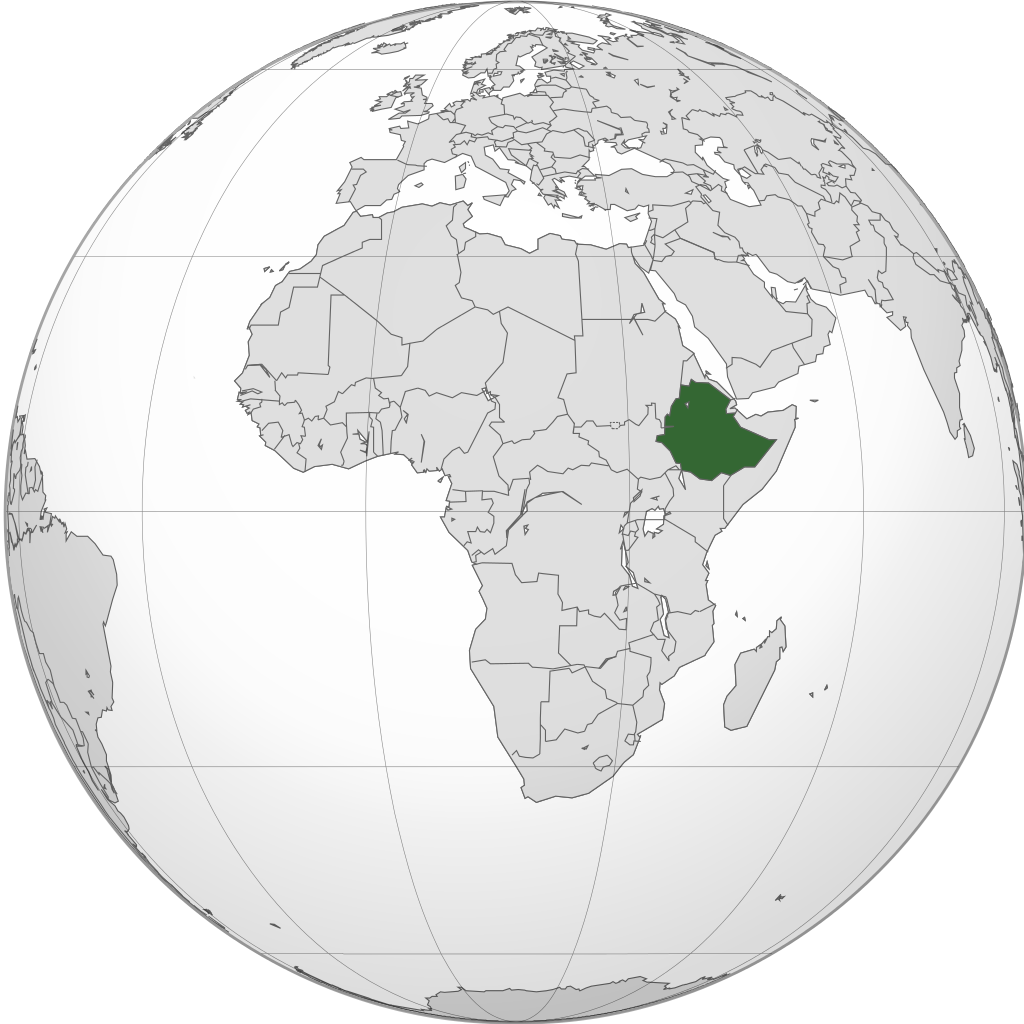Ethiopia, officially the Federal Democratic Republic of Ethiopia, is a landlocked country in East Africa.
History
Overview
The History of Ethiopia can be usefully categorized into four periods:
- To 1270: Antiquity
- To 1500: The Ethiopian Middle Ages (which ecompasses the beginning of the Zagwe Dynasty to the beginning of the emergence of Islam and the end of the early Solomoic period)
- To 1855: The Gondarine Period[1]
- To present day: The Modern Period (begining with the End of the Zemene Mesafint, Amharic for "the Era of Princes") under Tewdros II in 1855.[2]
Italy attempted to colonize Ethiopia in the 19th century but was defeated by Emperor Menelik's forces in 1896. Fascist Italy overthrew Emperor Haile Selassie and occupied Ethiopia from 1936 to 1941. Haile Sellasie was reinstated as Emperor and continued to rule the country until 1974. Starting from the 50s, the United States started to exert neocolonial relations in Ethiopia.[3]
In 1974, the Ethiopian Revolution took place, which ultimately brought the Derg to power. The Derg was chaired initially by Mengistu Haile Mariam (he was replaced by Aman Adom in September 1974), who later became head of state in 1977. The monarchy was formally abolished in 1975,[4] and replaced by a socialist government in Ethiopia. In 1987, the Derg was formally dissolved and the Peoples Democratic Republic of Ethiopia founded,[5] which was overthrown by the TPLF and other groups in 1991.[6]
1270-1500
1500-1855
1855-1974
1974-1991
1991-present day
Politics and Government
Demographics
There are 80 ethnic groups in Ethiopia. The largest nations in the country are the Tigray (6.1%) and Amhara (27%), who speak Semitic languages, the Somalis (6.2%) and the Oromo (34%), who speak a Cushitic language.[3]
Languages
References
- ↑ Harold G. Marcus (2002). A History of Ethiopia: Updated Edition: 'Chapter 2: The Golden Age of the Solomonic Dynasty, to 1500' (pp. 17-29). London: University of California Press. [LG]
- ↑ Bahru Zewde (2002). A History of Modern Ethiopia (1855-1991) (p. 21). Addis Abeba: Addis Abeba University Press. [LG]
- ↑ 3.0 3.1 Solyana Bekele (2021-08-09). "Smash neocolonialism in Ethiopia, erase the fake borders!" The Burning Spear. Archived from the original on 2022-07-29. Retrieved 2022-08-27.
- ↑ Bahru Zewde (2002). A History of Modern Ethiopia (1855-1991) (pp. 233-251). Addis Abeba: Addis Abeba University Press.
- ↑ Stefan Brüne (1990). IDEOLOGY, GOVERNMENT AND DEVELOPMENT - THE PEOPLE’S DEMOCRATIC REPUBLIC OF ETHIOPIA (p. 193). Northeast African Studies, vol. 12, no. 2/3,. doi: 10.2307/43660324 [HUB]
- ↑ Paul B. Henze (2004). Layers of Time: A History of Ethiopia (p. 330). Addis Abeba: Shama Books. [LG]
